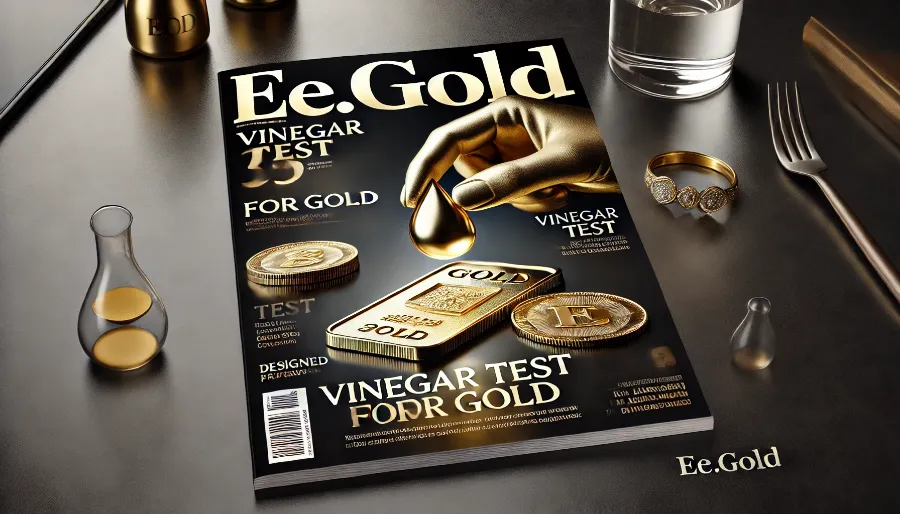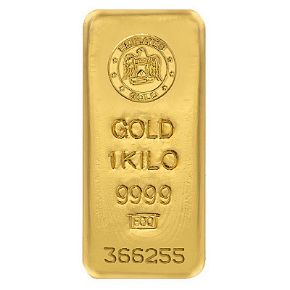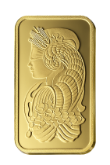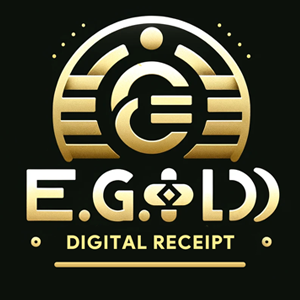
Is the Vinegar Test for Gold Accurate? The Complete Guide to Testing Gold with Vinegar
Gold has been a symbol of wealth and beauty for centuries, but with counterfeit gold flooding the market, determining authenticity is crucial. One of the simplest and most popular methods involves using vinegar, a common household item. But is the vinegar test for gold accurate? Let’s dive into the science, practicality, and reliability of this approach.
What Happens When You Use Vinegar to Test Gold
Gold is a chemically stable metal, meaning it resists oxidation, corrosion, and tarnishing under normal conditions. When exposed to vinegar, real gold should remain unaffected. Counterfeit gold, or gold-plated items, may react differently due to the base metals in their composition.
Why Use Vinegar for Gold Testing
The vinegar test for gold is popular for several reasons. First, it’s incredibly accessible—vinegar is inexpensive and commonly found in most households. Second, it doesn’t require special equipment, making it appealing to anyone who wants a quick way to check gold items. Finally, the process is simple, allowing even beginners to perform the test.
How to Perform the Vinegar Test for Gold
- Clean the Gold Item: Remove any dirt or oils to ensure accurate results.
- Choose the Right Spot: Test on a small, discreet area to avoid potential damage.
- Submerge or Apply Vinegar: Either immerse the gold item in white vinegar or use a cotton swab to apply it directly.
- Observe Changes: Let the vinegar sit for 10-15 minutes and watch for any discoloration, bubbling, or tarnishing.
- Rinse and Dry: After the test, rinse the item with water to remove vinegar residue and prevent any lingering effects.
Interpreting the Results
- No Reaction: If the gold remains unchanged, it is likely genuine.
- Color Changes: Tarnishing or discoloration may indicate lower-quality gold or a fake item.
- Bubbling or Fizzing: These reactions suggest non-gold metals are present.
Pros of the Vinegar Test
- Easy to Perform: No specialized tools or chemicals are needed.
- Affordable: White vinegar is cheap and readily available.
- Non-Toxic: Safe for use around the home compared to harsher chemicals.
Cons of the Vinegar Test
- Limited Accuracy: It cannot determine karat purity or distinguish between gold-plated and solid gold.
- Risk of Damage: Prolonged exposure to vinegar may harm delicate gold-plated items.
- Not Foolproof: Advanced fakes may resist vinegar just as real gold does.
Is the Vinegar Test Reliable?
The vinegar test is a practical starting point for identifying fake gold, but it has limitations. It works well for distinguishing between obvious counterfeits and genuine gold but cannot provide conclusive results about purity or high-quality forgeries. For critical evaluations, it should be paired with professional testing methods.
Science Behind the Vinegar Test
Vinegar contains acetic acid, which reacts with metals prone to oxidation. Real gold, being chemically inert, does not react with the weak acidity of vinegar. In contrast, metals like brass, copper, or zinc may oxidize or corrode, revealing their true nature.
Real-Life Examples of Vinegar Testing
- A gold bracelet purchased at a flea market remained unaffected by vinegar, indicating it was genuine gold.
- A gold-colored coin tarnished when exposed to vinegar, confirming it was a counterfeit.
- A family heirloom necklace showed no reaction to vinegar but later tested as gold-plated when professionally evaluated.
Alternative Methods to Test Gold
While vinegar is an accessible method, other tests offer greater precision:
- Acid Test: Uses nitric acid to evaluate gold’s reaction and determine karat.
- Density Test: Measures gold’s high density (19.3 g/cm³).
- Magnet Test: Detects magnetic properties to rule out fake metals.
- Electronic Testing: Provides accurate readings of gold purity.
Vinegar vs Other Testing Methods
| Testing Method | Accuracy | Ease of Use | Cost | Damage Risk |
|---|---|---|---|---|
| Vinegar Test | Moderate | Very Easy | Very Low | Low |
| Acid Test | High | Moderate | Low-Moderate | Low |
| Density Test | High | Moderate | Low | None |
| Electronic Testing | Very High | Easy | High | None |
| XRF Testing | Extremely High | Professional | Very High | None |
The table shows that vinegar testing is a convenient and affordable choice but lacks the precision of professional methods.
Common Misconceptions About Vinegar Testing
- Vinegar Proves Purity: Vinegar can indicate authenticity but not karat levels or purity.
- No Reaction Equals Gold: Advanced fakes can sometimes mimic gold’s resistance to vinegar.
- All Gold Items Are the Same: Variations in karat and alloy composition may affect results.
When to Rely on Professional Testing
If your gold piece holds significant value or if the vinegar test results are inconclusive, seeking professional evaluation is essential. Jewelers and certified gold appraisers can provide more reliable assessments using advanced tools.
FAQs About the Vinegar Test for Gold
- Does vinegar damage real gold?
No, real gold is resistant to vinegar’s acidity and will not be damaged. - Can vinegar remove tarnish from gold?
Vinegar can clean certain gold items but may harm gold-plated or delicate pieces. - What if my gold changes color in vinegar?
It suggests the presence of non-gold metals or alloys. - How long should I leave gold in vinegar?
10-15 minutes is sufficient for testing. - Is vinegar better than an acid test?
No, acid testing is more precise and reliable. - Can the vinegar test work on white gold?
Yes, but white gold alloys may react differently depending on their composition. - Will vinegar confirm 24-karat gold?
No, it can only indicate authenticity, not purity. - What other household items can test gold?
Magnets and ceramic plates are common alternatives for simple tests. - Can fake gold pass the vinegar test?
Yes, some advanced fakes may not react to vinegar. - Should I always test gold before buying?
Yes, especially for secondhand or unverified pieces.
The vinegar test for gold is a simple and cost-effective way to verify authenticity. While it cannot replace professional methods, it’s an excellent starting point for anyone looking to identify real gold at home. By understanding its limitations and combining it with other tests, you can confidently assess your gold’s value and authenticity.
NOTE
This Content is the copyrighted content of EE.GOLD. All rights are reserved. You are welcome to share or use our content only by including direct links to our website. Any other form of reproduction, distribution, or use without proper attribution is strictly prohibited.
This Content is intended solely for educational purposes. The information provided does not constitute financial or investment advice.
Please note that Digital Storage Receipt, Secure Storage Solutions, and Physical Gold Sales are the only services offered by EE.GOLD.
We strictly adhere to government regulations and are firmly against all illegal financial or investment activities globally.
For further inquiries, feel free to contact us through our official channels.










.png)


Инновационные решения обеспечивают надежный обзор даже в темное время суток.
Мы предлагаем различные варианты систем, адаптированных для бизнеса и частных объектов.
<a href="https://videonablyudeniemoskva.ru/">videonablyudeniemoskva.ru</a>
Качественный монтаж и консультации специалистов обеспечивают максимально удобным для каждого клиента.
Оставьте заявку, чтобы получить персональную консультацию в сфере безопасности.
Сервисы должны внедрять инструменты контроля, такие как лимиты на депозиты , чтобы минимизировать зависимость .
Регулярная подготовка персонала помогает выявлять признаки зависимости , например, неожиданные изменения поведения .
<a href="https://sacramentolife.ru">вавада вход</a>
Для игроков доступны консультации экспертов, где можно получить помощь при проблемах с контролем .
Соблюдение стандартов включает аудит операций для предотвращения мошенничества .
Задача индустрии создать условия для ответственного досуга, где удовольствие сочетается с психологическим состоянием.
На этом сайте доступны авторские видеоматериалы девушек , созданные с профессиональным подходом.
Контент включает архивные съемки, редкие материалы, тематические подборки для узких интересов.
Все данные проверяются перед публикацией, чтобы гарантировать качество и актуальность .
<a href="https://mebelnoe-dvizhenie.ru">pornhub</a>
Чтобы упростить поиск посетителей добавлены категории жанров, возрастным группам .
Сайт гарантирует конфиденциальность и соблюдение лицензий согласно правовым требованиям.
Проверьте отзывы клиентов или рекомендации знакомых , чтобы оценить профессионализм исполнителя.
Уточните стоимость услуг, учитывая расстояние перевозки , сезонность и услуги упаковки.
https://myrecipe.at.ua/forum/16-19112-1
Убедитесь наличия страхового полиса и уточните условия компенсации в случае повреждений.
Оцените уровень сервиса: оперативность ответов, детализацию договора.
Узнайте, используются ли специализированные грузчики и защитные технологии для безопасной транспортировки.
Основанная в 1839 году компания славится авторским контролем каждого изделия, требующей многолетнего опыта.
Инновации, такие как автоматические калибры, сделали бренд как новатора в индустрии.
<a href="https://patek-philippe-shop.ru/">хронометры Patek Philippe фото</a>
Лимитированные серии демонстрируют сложные калибры и ручную гравировку , выделяя уникальность.
Текущие линейки сочетают инновационные материалы, сохраняя классический дизайн .
Это не просто часы — символ семейных традиций, передающий наследие мастерства из поколения в поколение.
Импортные сборы составляют в диапазоне 15–20%, в зависимости от категории товаров — например, сельхозпродукты облагаются по максимальной ставке.
Для ускорения процесса используют серые каналы доставки , которые избегают бюрократических задержек, но связаны с дополнительными затратами.
<a href="https://www.chitalnya.ru/press/3362/">Сертификация товара из Китая</a>
При официальном оформлении требуется предоставить сертификаты соответствия и декларации , особенно для сложных грузов .
Время транспортировки варьируются от нескольких дней до месяца, в зависимости от удалённости пункта назначения и эффективности таможни .
Стоимость услуг включает транспортные расходы, таможенные платежи и услуги экспедитора, что влияет на рентабельность поставок.
At some point, I couldn’t focus. I blamed stress. Still, my body kept rejecting the idea. I searched forums. The warnings were there — just buried in jargon.
<a href="https://www.enjoytaxibangkok.com/forum/topic/560717/that-pharmacy--quot;cure-quot;-for-tourist-cough-can-trap-you-in-traffic">zithromax 500mg</a>
It finally hit me: your body isn’t a template. Two people can take the same pill and walk away with different futures. Damage accumulates. Still we don’t ask why.
Now I don’t shrug things off. Not because I don’t trust science. I challenge assumptions. Not all doctors love that. This is survival, not stubbornness. The lesson that stuck most, it would be keyword.
Воспользуйтесь уникальные алгоритмы для анализа цифровых следов в открытых источниках.
Выясните контактные данные или активность через автоматизированный скан с верификацией результатов.
<a href="https://eog13.tech/">программа глаз бога для поиска людей</a>
Бот работает с соблюдением GDPR, обрабатывая открытые данные .
Закажите расширенный отчет с историей аккаунтов и списком связей.
Доверьтесь проверенному решению для digital-расследований — точность гарантирована!
Часы оснащены вращающийся безель , Oyster-корпус , обеспечивающие герметичность даже в экстремальных условиях.
Дизайн включает светящиеся маркеры, стальной корпус Oystersteel, подчеркивающие функциональность .
<a href="https://rolex-submariner-shop.ru">Хронометры Rolex Submariner купить</a>
Автоподзавод до 70 часов сочетается с автоматическим калибром , что делает их идеальным выбором для активного образа жизни.
С момента запуска Submariner стал эталоном дайверских часов , оцениваемым как коллекционеры .
Здесь вы легко найдёте факты и мнения, культуре и разнообразных темах.
Информация обновляется в режиме реального времени, что позволяет следить за происходящим.
Минималистичный дизайн помогает быстро ориентироваться.
https://ekbtoday.ru
Каждая статья предлагаются с фактчеком.
Редакция придерживается информативности.
Читайте нас регулярно, чтобы быть на волне новостей.
This platform aggregates latest headlines on runway innovations and seasonal must-haves, sourced from权威 platforms like Vogue and WWD.
From chunky accessories to eco-conscious designs, discover insights aligned with fashion week calendars and trade show highlights.
Follow updates on brands like Paul Smith and analyses of influencer collaborations featured in Vogue Business.
Learn about design philosophies through features from Inside Fashion Design and Who What Wear UK ’s trend breakdowns.
Whether you seek luxury editorials or shopping recommendations, this site curates content for professionals alike.
https://miami.luxepodium.com/
Эта игра сочетает в себе action-adventure с элементами иммерсивного симулятора в альтернативном СССР 1955 года.
Сюжет происходит в футуристическом исследовательском центре, где необходимо расследовать технологический коллапс.
Механика включает восстановление врагов через длительный период .
<a href="https://android-free.com/tsarskaya-kitchen-fever/">царская лихорадка скачать на андройд</a>
Визуальный стиль сюрреалистические локации .
Советуется игрокам использовании окружающей среды в боях для успешного прохождения.
Платформы и оптимизация поддерживают Linux через Proton .
Инновационные инструменты предоставляют точный мониторинг онлайн, минимизируя ошибки при подсчёте.
Интеграция с кадровыми системами упрощает формирование отчётов и управление графиками, отпусками .
<a href="https://bitcop.ru/monitoring/obzor-luchshih-besplatnyh-programm-dlja-slezhenija-za-kompjuterom">программы мониторинга</a>
Автоматизация процессов экономит время менеджеров , давая возможность сфокусироваться на развитии команды.
Простое управление гарантирует удобство работы как для администраторов, уменьшая время обучения .
Защищённые системы генерируют отчёты в реальном времени, способствуя принятию обоснованных решений .
Для сотен людей тату — вечный символ , который напоминает о важных моментах и становится частью пути .
Процесс создания — это творческий диалог между мастером и человеком, где тело становится полотном эмоций.
<a href="https://www.tattoomarket.ru/">тату картриджи</a>
Разные направления, от акварельных рисунков до биомеханических композиций, позволяют воплотить самую смелую фантазию в гармоничном исполнении.
Эстетика нательного искусства в способности расти вместе с человеком, превращая воспоминания в незабываемый визуальный язык .
Подбирая эскиз, люди показывают своё «я» через формы, создавая неповторимый шедевр , которое радует глаз каждый день.
Для многих тату — вечный символ , который напоминает о преодолённых трудностях и становится частью пути .
Сам акт нанесения — это творческий диалог между художником и клиентом , где кожа превращается полотном эмоций.
<a href="https://www.tattoomarket.ru/">тату оборудование</a>
Разные направления, от минималистичных узоров до традиционных орнаментов , позволяют воплотить любую идею в изысканной форме .
Эстетика нательного искусства в их вечности вместе с хозяином , превращая эмоции в незабываемый визуальный язык .
Выбирая узор , люди показывают своё «я» через цвета , создавая неповторимый шедевр , которое наполняет уверенностью каждый день.
Made from 18k white gold , it blends precision timing features with dazzling visual appeal .
Produced as small batches , this timepiece attracts discerning collectors worldwide.
<a href="https://sites.google.com/view/rolex-rainbow/rainbow">Daytona Rainbow order</a>
Every gradient stone on the bezel creates a spectrum that catches the light .
Powered by Rolex’s self-winding chronograph movement , it ensures seamless functionality for daily wear .
An investment piece, the Daytona Rainbow celebrates Rolex’s innovation in every detail .
Équipées de capteurs optiques ainsi que de moniteur cardiaque , elles s’adaptent selon vos objectifs .
Leur autonomie atteint une longue durée en utilisation normale , idéale pour voyages .
<a href="https://garmin-sport.com">Garmin Instinct 3</a>
Les outils de suivi permettent de la fréquence cardiaque ainsi que les calories, offrant global .
Simples en utiliser , elles se synchronisent parfaitement avec vos apps , avec une interface intelligente .
Choisir Garmin c’est bénéficier de des solutions fiable dans la gestion de votre quotidien.
Our company offers custom solutions for enterprises of any scale.
We manage all logistics processes to make your operations uninterrupted.
<a href="https://asia-cargo.site/">air delivery china</a>
With scheduled shipments, we ensure timely delivery of your packages.
Clients trust our experienced team and affordable rates.
Choosing us means assurance in every shipment.
Автоматизация процессов сокращает погрешности в отчётности .
Менеджерам легче контролировать рабочие графики в режиме реального времени .
https://wikidoc.info/tech/modern-approaches-to-management/
Работники пользуются гибким графиком при оформлении отпусков.
Внедрение таких систем существенно упрощает управленческие задачи в кратчайшие сроки.
Это гарантирует прозрачность в коллективе , укрепляя мотивацию команды .
Теперь пользователи могут помечать важные месседжи.
Это позволяет быстро возвращаться нужную информацию.
<a href="https://stars-bot.pro/">купить звезды недорого</a>
Функция полезна для ежедневного общения.
Благодаря этому легко зафиксировать ключевые фразы.
Такой инструмент бережёт ресурсы и делает общение быстрее.
Они служат для поддержки авторов.
Пользователи имеет возможность передавать звёзды чатам.
<a href="https://bot-stars.pro/">купить звезды в телеграм через бота</a>
Звёзды обмениваются в доход.
Это понятный способ выразить благодарность.
Используйте опцию уже прямо сейчас.
It is designed to guide you with multiple topics.
You will get simple explanations and everyday examples.
The content is regularly updated to stay relevant.
https://ra-be.info
It’s a excellent resource for self-development.
Every visitor can get value from the materials here.
Feel free to checking out the site now.
They feature a rising multiplier that players can follow in real time.
The goal is to make a move before the multiplier crashes.
<a href="https://myfamilycinema.help/showthread.php?tid=679125">csgo betting sites crash</a>
Such games are popular for their simplicity and thrill.
They are often used to train timing.
Many platforms present crash games with different designs and features.
You can check out these games today for a interesting experience.
Сайты автозапчастей дают широкий каталог запчастей для любых моделей автомобилей.
Цены в интернет-площадках часто выгоднее, чем в офлайн магазинах.
Покупатели могут сопоставлять предложения разных поставщиков в несколько кликов.
<a href="https://exzap.uz/legkovie">Легковые запчасти</a>
Кроме того, продуманная система отправки позволяет забрать заказ без задержек.
Оценки других клиентов способствуют выбрать подходящие автозапчасти.
Многие сервисы предоставляют страховку на запчасти, что повышает уверенность покупателей.
Таким образом, онлайн-покупка автозапчастей экономит время и деньги.
Il gioco equilibrato nell’intrattenimento digitale significa fare azioni attente mentre ci si partecipa alle piattaforme interattive.
Esso promuove abitudini positivi e aiuta i utenti a creare confini chiari.
Linee guida del gioco responsabile comprendono il gestire tempo e spese in modo sensato.
I utenti sono invitati a mantenere un approccio sostenibile e a monitorare il proprio comportamento.
Risorse formative sul gioco responsabile aiutano le persone a identificare i propri abitudini.
https://icosahom2020.org
Molte applicazioni mettono a disposizione strumenti e opzioni per autovalutazione.
Praticare il gioco responsabile aiuta a tutti di sfruttare al meglio l’i-gaming in modo responsabile.
In sintesi, il gioco responsabile nell’i-gaming riguarda la comprensione e il seguire decisioni che supportano il proprio benessere.
Прежде всего стоит определить свои потребности и запросы от консультации с профессионалом.
Хорошо изучить квалификацию и опыт психолога.
Отзывы прошлых обратившихся могут помочь сделать выбор более осознанным.
https://dantexchl29630.life3dblog.com/35718401/%D0%94%D0%B5%D1%82%D1%81%D0%BA%D0%B8%D0%B9-%D0%BF%D1%81%D0%B8%D1%85%D0%BE%D1%82%D0%B5%D1%80%D0%B0%D0%BF%D0%B5%D0%B2%D1%82-%D0%9C%D0%BE%D1%81%D0%BA%D0%B2%D0%B0-%D0%A6%D0%B5%D0%BD%D1%82%D1%80-%D0%BC%D0%B5%D0%BD%D1%82%D0%B0%D0%BB%D1%8C%D0%BD%D0%BE%D0%B3%D0%BE-%D0%B7%D0%B4%D0%BE%D1%80%D0%BE%D0%B2%D1%8C%D1%8F-%D0%AD%D0%BC%D0%BF%D0%B0%D1%82%D0%B8%D1%8F
Также нужно проверить методы, которыми работает консультант.
Стартовая сессия помогает почувствовать, насколько есть доверие общения.
Следует учитывать стоимость и режим работы (например, онлайн).
Взвешенный выбор специалиста способен улучшить личный рост.
It is about light rather than exposure.
Skilled photographers use soft lighting to convey emotion.
Such images emphasize artistry and character.
https://xnudes.ai/
Each photo aims to evoke feelings through movement.
The intention is to portray human beauty in an elegant way.
Observers often admire such work for its emotional power.
This style of photography blends emotion and vision into something truly expressive.
За счёт своей плотности энергии дизельное топливо позволяет достичь стабильную работу двигателей.
Соответствующее стандартам топливо улучшает долговечность работы двигателя.
Существенное влияние имеет состав топлива, ведь примеси могут негативно повлиять.
Компании, занимающиеся реализацией дизельного топлива должны соблюдать все стандарты.
Новые методы позволяют улучшать его характеристики.
При выборе дизельного топлива важно проверять условия хранения.
Доставка и содержание топлива также определяют на его свойства.
Плохое топливо может спровоцировать поломке двигателя.
Поэтому сотрудничество с надёжными компаниями — гарантия стабильности.
В настоящее время представлено множество вариантов дизельного топлива, отличающихся по сезону.
Зимние марки дизельного топлива позволяют функционирование оборудования даже при морозах.
Благодаря развитию современных подходов качество топлива постоянно растёт.
Грамотный выбор в вопросе использования дизельного топлива обеспечивают экономию ресурсов.
Таким образом, правильно подобранное ДТ является основой устойчивого функционирования любого оборудования.
On the website, you can find various materials that broaden your horizons.
Visitors will value the content shared through this platform.
Every page is well-structured, making it simple to use.
The content are presented professionally.
The site includes tips on many areas.
Whether your interest is in inspiration, this site has a lot to offer.
Overall, this site is a valuable hub for information seekers.
https://rublevo.info/
https://gidromet.info/
On this platform, you can discover various materials that broaden your horizons.
Visitors will benefit from the resources shared on this site.
Every page is organized clearly, making it convenient to use.
The posts are presented professionally.
The site includes recommendations on many areas.
If you want to find practical advice, this site has a lot to offer.
In general, this website is a valuable hub for those who love learning.
https://slotspass.de/
https://tango-city.de/
Такой шаг предоставляет новые возможности для работы и бизнеса.
ВНЖ помогает легче пересекать границы и избегать визовых ограничений.
Также подобное решение может улучшить уверенность в будущем.
<a href="https://expert-immigration.com/blog/grazhdanstvo-chili">Гражданство Чили</a>
Большинство граждан рассматривают ПМЖ как способ расширения возможностей.
Получив ВНЖ или второй паспорт, человек получить образование за рубежом.
Разные направления предлагают разные условия получения статуса резидента.
Именно поэтому тема получения становится всё более значимой для тех, кто думает о будущем.
Here, you can learn about different articles that broaden your horizons.
Visitors will appreciate the content shared here.
Every category is thoughtfully designed, making it pleasant to use.
The posts are relevant and engaging.
It’s possible to find guides on many areas.
Whether you’re looking for practical advice, this site has something for everyone.
To sum up, this platform is a great source for information seekers.
https://pz-rlp.de/
Такой подход помогает закреплять материал и улучшать результаты.
Большинство школьников понимают, что внеурочные упражнения способствуют развитию дисциплины.
Постоянная работа позволяет развить логическое мышление.
https://k-politika.ru/gotovye-domashnie-zadaniya-za-i-protiv/
Педагоги нередко говорят, что домашняя подготовка помогает устранять пробелы.
Помимо этого, домашняя работа развивает самодисциплину.
Школьники, которые делают уроки, обычно добиваются лучших результатов.
Таким образом, выполнение домашних заданий остаётся неотъемлемой частью образования для каждого школьника.
Многим пользователям нравится, что здесь удобный интерфейс, позволяющий быстро разобраться к работе платформы.
В сервисе доступно широкий выбор наборов, что добавляет увлекательности.
Создатели платформы регулярно пополняют коллекции, чтобы пользователи получали новые варианты.
<a href="https://ruminus.ru/incs/pgs/obzor_sayta_easydrop.html">промы изи дроп</a>
Многие отмечают, что EasyDrop комфортен для новичков и опытных игроков благодаря понятной системе сортировки.
Также ценится то, что платформа дает несколько форматов активности, повышающие общую динамику работы.
Тем не менее необходимо понимать, что любые действия на подобных платформах требуют ответственного отношения.
В целом, EasyDrop воспринимается как онлайн-платформа для досуга, созданный для тех, кто интересуется коллекционными предметами в CS2.
Они отмечают заслуги людей, которые внесли большой вклад в укрепление государства.
Эти знаки признания помогают усиливать уважение ответственного труда.
Помимо этого, они вдохновляют людей на повышение личных результатов.
<a href="https://kuhni-v-ivanovo.ru/">https://kuhni-v-ivanovo.ru</a>
Оценка заслуг государством нередко укрепляет авторитет к человеку в коллективе.
Следует учитывать, что награда — это не просто знак, а выражение благодарности.
Она поднимает ценность работы, который был выполнен награждённым.
Таким образом, государственные награды остаются важным элементом культуры в современном обществе.